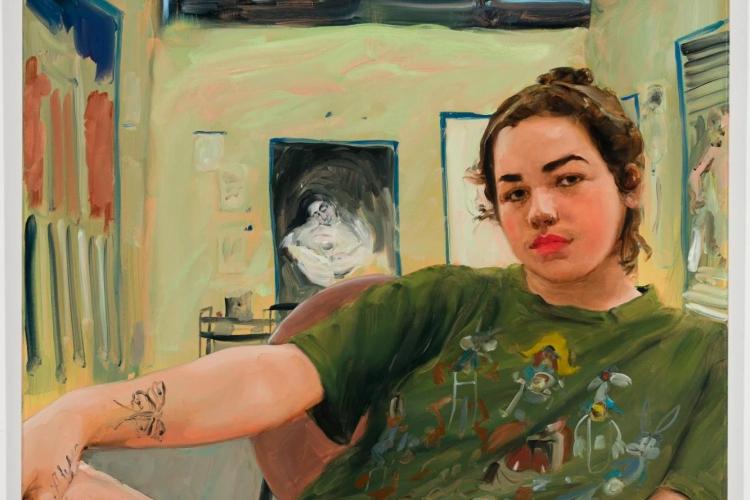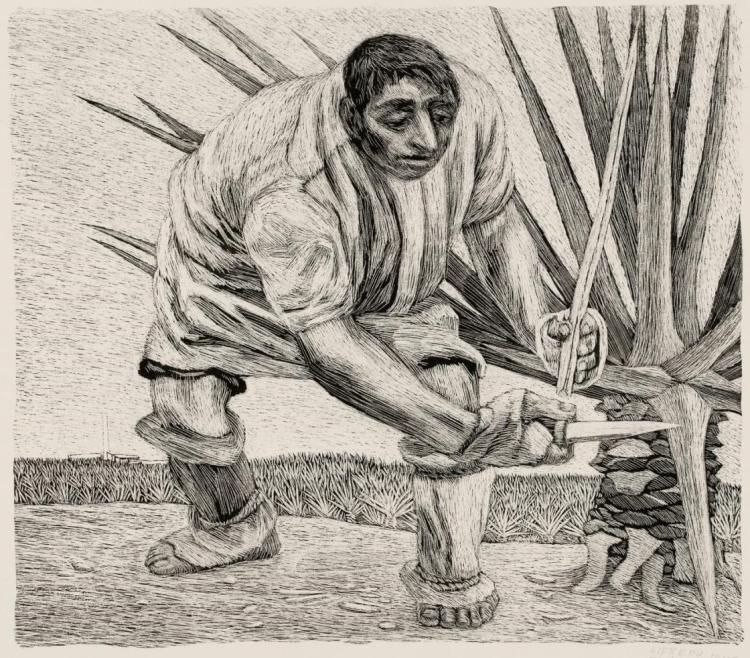Student-curated exhibit focuses on labor and the work of art
‘(Art)work: Systems of Making’ opens with a celebration Friday afternoon at the CU Art Museum
As the 12 graduate students gathered around a long table discussing art, over several weeks their conversation eventually wound its way to labor. They were inspired by the labor movements happening in the United States and around the world.
“These movements inspired wage-related discussions for us as students at CU Boulder,” explains Rachel DeNagy. “We empathize with labor rights groups, because we feel both underrepresented in society and underpaid as student-workers for our labor.”
The conversations began as brainstorming the theme for an exhibition they would curate at the University of Colorado Art Museum and grew into “(Art)work: Systems of Making,” which opens with a celebration from 4:30-6:30 p.m. Friday at the CU Art Museum and runs through March 22.

"The Artist Eroticized (Alina)" (2020), an oil on linen by Jenna Gribbon that is included in "(Art)work: Systems of Making."
“(Art)work: Systems of Making” features artworks that offer different perspectives on labor and the workplace. Some of the featured themes include artist collaborations and networks of creation, the coding of labor according to gender and race, labor movements and the connections between labor and nationalism.
It is the culmination of a graduate-level curatorial practicum taught by Hope Saska, acting director, chief curator and director of academic engagement for the CU Art Museum.
“Our focus has been curating from a social justice perspective,” Saska says. “The students guided the discussion to topics and issues around labor, and I’m really impressed by how they took this key topic and expanded it in a lot of really innovative ways.”
Focusing on labor
In discussing how to approach the various issues and topics relating to labor, the students “felt there were a lot of ways to use the museum's collection, and the format of an art exhibit, to cover ‘labor’ as a theme, ways that would intersect the museum's collection with this broad concept from different angles,” says dani wasserman, giving as an example the labor of artmaking, “or hidden or underrepresented labor in society—what people might immediately think of as ‘blue collar labor.’ There's a lot of interesting interpretive and curatorial work that can be done around depictions of this kind of work in art, especially with a collection as broad and eclectic as CU Art Museum’s.”
The students delved into the CU Art Museum’s collections, as well as those of University Libraries, to curate an exhibit that includes works as varied as manuscript pages on vellum from the early Renaissance paired with inexpensive magazines produced by the Guerilla Girls activist and artist collective.
There are works that address how labor intersects with race and gender, posters for labor unions and works—such as Japanese wood block prints—produced by artist collectives.

"Henequenero" (1945), a lithograph by Alfredo Zalce that is part of "(Art)work: Systems of Making."
“Given my research focus on Japanese art, I was immediately drawn to the Japanese artworks,” explains Kat Bertram. “Collaborating with another art history graduate, Sam Hensley, who shares a Japanese focus, we centered our discussions around the theme and identified Ukiyo-e (a genre of Japanese art from the 17th-19th centuries; its artists produced woodblock prints and paintings) as a fitting subject. Our interest lay in exploring the collaborative dynamics within art creation, particularly in the context of Ukiyo-e, where the traditional emphasis on the designer overlooks the contributions of carvers, printers and publishers.”
‘More than a stroke of genius’
Because the exhibition is happening in a post-COVID-lockdown world, Saska says, a lot of the students’ discussion also focused on how labor does or doesn’t define people.
“I hope that, at best, people might leave the show with an impression of how labor is really central to our lives and our society,” wasserman says. “How through analyzing our attitudes about work, whether that be through art— that's just one way— we can ask some really interesting questions about how we got to this world we are in and maybe even start to consider how reimagining that relationship to labor and to work can help us imagine a different, more equitable future. At the least, I think people will leave with a new concept of how much labor goes into artmaking itself.”
DeNagy adds that another goal for the exhibit is for “people see how art is layered. An artwork that we see in a gallery is a product of hours spent ideating, planning, laboring and fine-tuning.
“Art is more than a stroke of genius,” DeNagy says. “I hope that people see art as a group effort. There is more to a painting, a sculpture, a poster or a print than what first meets the eye. Art is a collective process, between an artist and their work, or between multiple people working together to create a finished product.”
Top image: "Men of Steel" (1939) by Samuel L. Margolies; the work is included in "(Art)work: Systems of Making"
Did you enjoy this article? Subscribe to our newsletter. Passionate about the CU Art Museum? Show your support.

